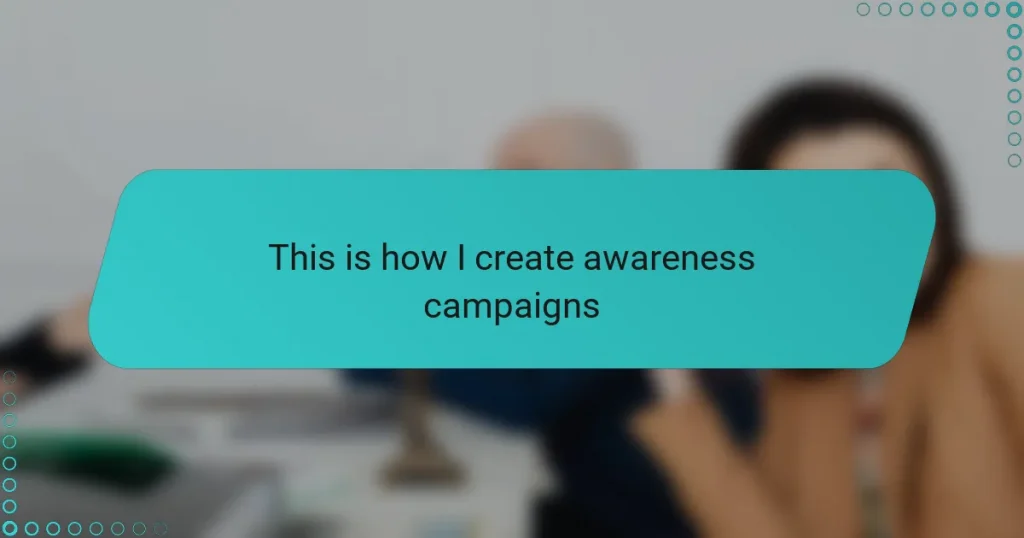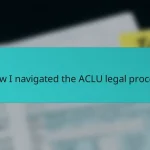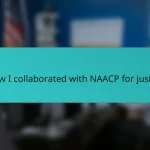Key takeaways
- Effective legal advocacy campaigns require clear messaging, emotional resonance, and a deep understanding of the affected communities.
- Consistency, timing, and a thorough knowledge of the target audience are crucial for maximizing campaign impact.
- Utilizing a mix of communication channels amplifies the message and engages diverse audiences effectively.
- Measuring impact involves both quantitative metrics and qualitative feedback, emphasizing relationship-building and adaptability throughout the campaign.
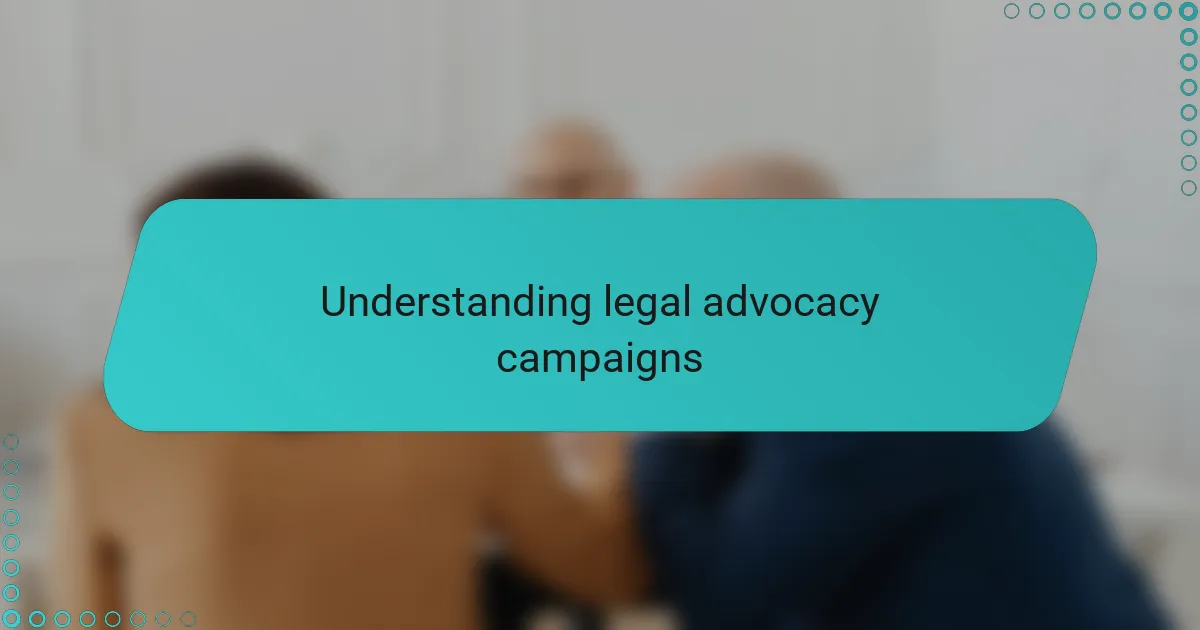
Understanding legal advocacy campaigns
Legal advocacy campaigns, in my experience, are more than just raising awareness—they’re about creating a ripple effect that leads to tangible change within the justice system. I often ask myself, how can a well-crafted message move not only public opinion but also influence policymakers? That question guides every campaign I create.
From working on several legal advocacy projects, I’ve learned that understanding the nuances of the law and the communities affected is crucial. When you truly grasp their struggles, your message hits harder, resonating on a deeper emotional level. Have you ever felt the power of a story that made complex legal issues suddenly clear and urgent?
What fascinates me most is how legal advocacy campaigns blend facts with human stories, transforming abstract legal principles into relatable and urgent calls to action. It’s about connecting the dots between rights, laws, and the daily realities people face—a challenge I find both demanding and rewarding.
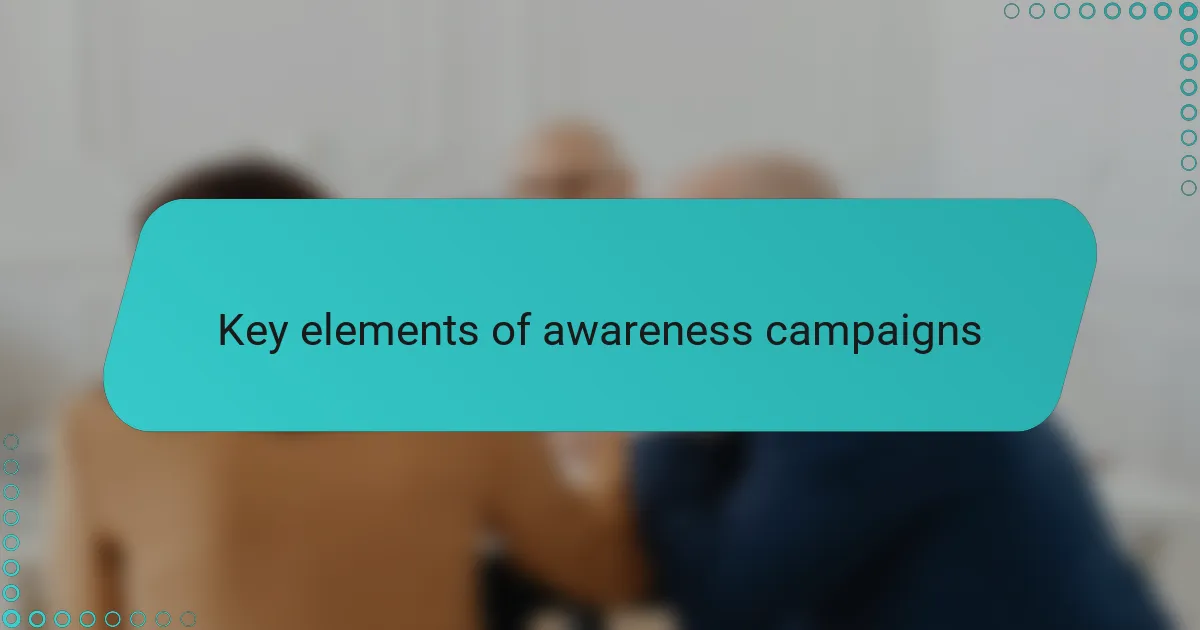
Key elements of awareness campaigns
At the core of every successful awareness campaign lies a clear and compelling message. I’ve noticed that when the message is straightforward yet emotionally charged, it captures attention and sticks with people longer. How often have you found yourself moved by a story that felt both personal and urgent? That’s exactly the kind of connection I strive to create.
Another element I can’t overlook is knowing your audience inside out. In legal advocacy, this means understanding not only the community you’re representing but also the stakeholders—lawmakers, journalists, and allies—who can amplify your campaign. It’s like tuning an instrument; when everything is aligned, the campaign’s impact resonates far beyond the initial outreach.
Lastly, consistency and timing play a huge role. I’ve seen campaigns lose momentum simply because the message wasn’t repeated often enough or was launched when people were distracted by other issues. Have you experienced how a well-timed campaign can cut through the noise? That’s why I plan each step carefully, ensuring the message reaches audiences when they’re most receptive.

Planning your advocacy strategy
Planning an advocacy strategy always starts with setting clear, achievable goals. From my experience, if you don’t define what success looks like early on, it’s easy to lose direction or dilute your message. Have you ever tried to build something without a blueprint? It’s almost impossible to get the outcome you want.
Next, I map out the key actors involved—the people, institutions, and channels that can make or break the campaign. I’ve learned the hard way that ignoring stakeholders, even those who seem peripheral, can stall progress. Who have you maybe overlooked that ended up being crucial?
Finally, I consider the resources at hand—time, budget, and expertise—and align them realistically with the strategy. I’ve seen passion fade fast when campaigns overcommit without support, so balancing ambition with practicality keeps the effort sustainable. How often do you find yourself scrambling because the plan was too ambitious from the start?
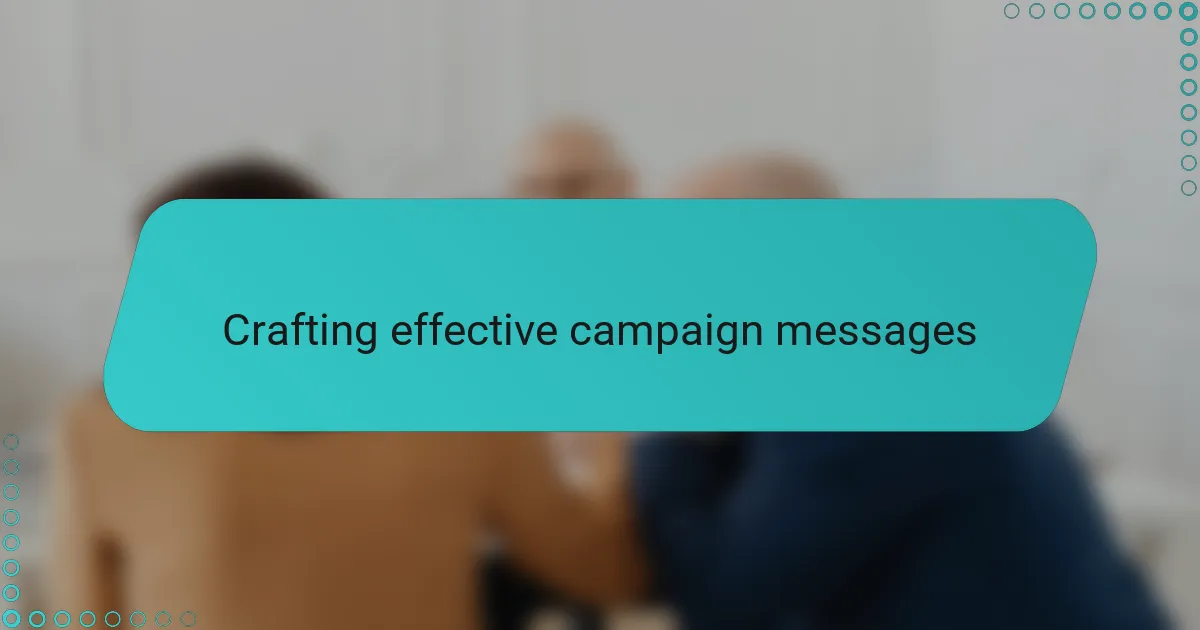
Crafting effective campaign messages
Crafting effective campaign messages means striking a balance between clarity and emotion. I’ve found that when a message is too dense with legal jargon, it loses people quickly—but strip it back too much, and you risk oversimplifying the issue. Have you ever wrestled with finding just the right words that both inform and inspire? That’s the delicate dance I always aim to master.
One thing I often remind myself is to anchor messages in real stories that reflect the lived experiences behind the laws. When I share a personal anecdote from someone affected, the message stops feeling theoretical and becomes urgent and human. Isn’t it amazing how a single story can suddenly make a complicated legal battle feel immediate and relatable?
Finally, I prioritize a message’s call to action—it needs to be clear and doable. I’ve noticed campaigns falter when people understand the problem but don’t know how to help. Have you encountered messages that motivate but leave you wondering what’s next? I make sure every message points to a specific step, making advocacy something everyone feels empowered to join.
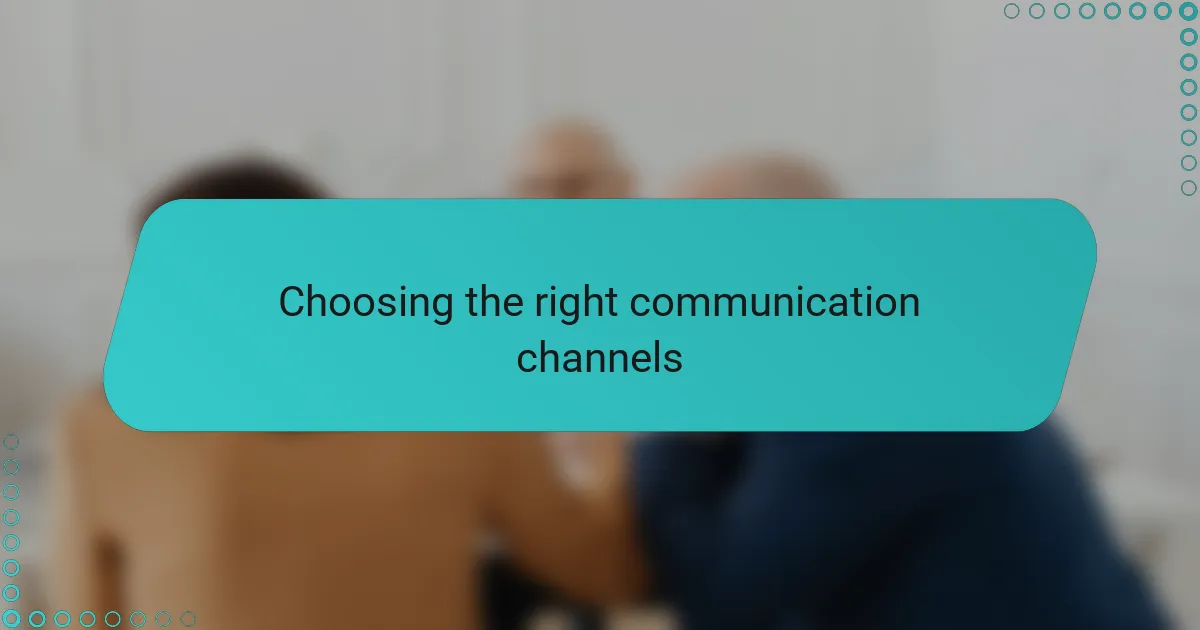
Choosing the right communication channels
Choosing the right communication channels feels like picking the perfect stage for your message. From my experience, if your audience isn’t where you broadcast, even the most powerful story can fall flat. Have you ever poured hours into crafting something only to realize it wasn’t reaching the people who needed to hear it most?
I remember a campaign where we initially relied too heavily on social media, assuming that everyone engaged there. But the legal communities and policymakers we wanted to influence responded better to targeted emails and in-person meetings. That taught me to tailor channels not just to audience demographics but also to their habits and preferences.
It’s also important to mix channels strategically. Combining traditional media, digital platforms, and grassroots outreach creates a feedback loop that amplifies the message. Have you tried blending these methods to foster both broad awareness and deep engagement? In my work, that balance often turns a campaign from a whisper into a movement.
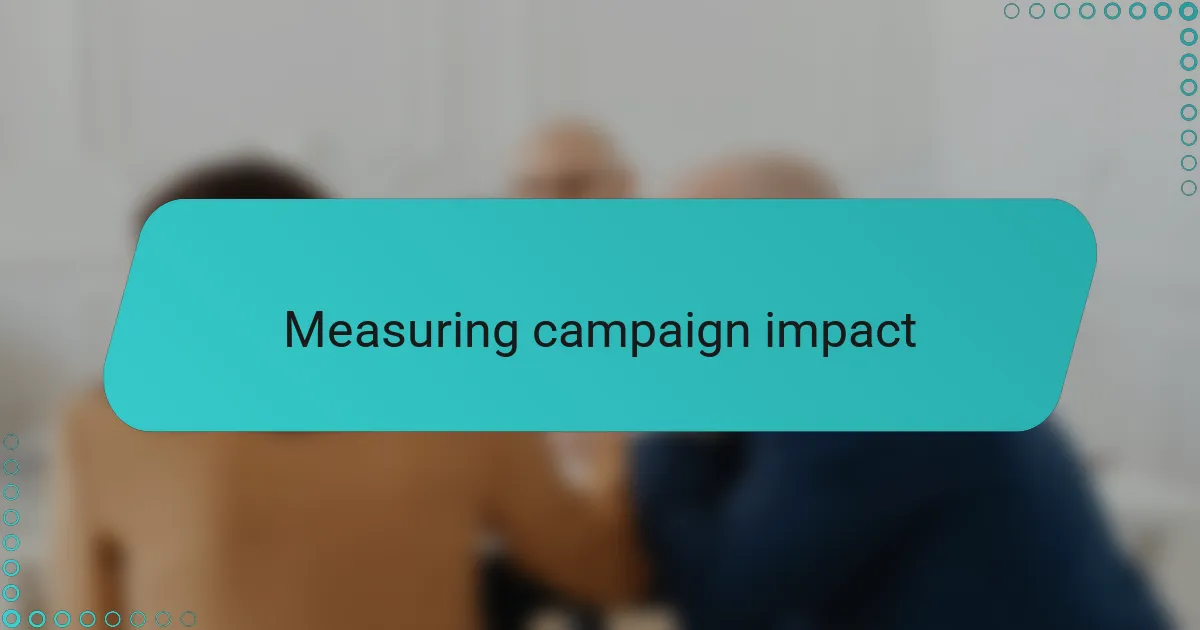
Measuring campaign impact
Measuring campaign impact always feels like piecing together a puzzle for me. I ask myself, which signs truly show that our message sparked awareness or even moved decision-makers? It’s never just about numbers; understanding the story behind those metrics makes all the difference.
I’ve learned to combine quantitative data—like website visits or petition signatures—with qualitative feedback from community members and partners. That balance reveals not only if the campaign reached people but also how deeply it resonated. Have you ever noticed how a heartfelt comment can sometimes speak louder than statistics?
Tracking change over time is another insight I can’t overlook. Sometimes the impact unfolds slowly, like shifts in policy discussions or public attitudes that aren’t immediately visible. Patience and persistence matter, and watching those subtle ripples grow has been one of the most rewarding parts of my work.
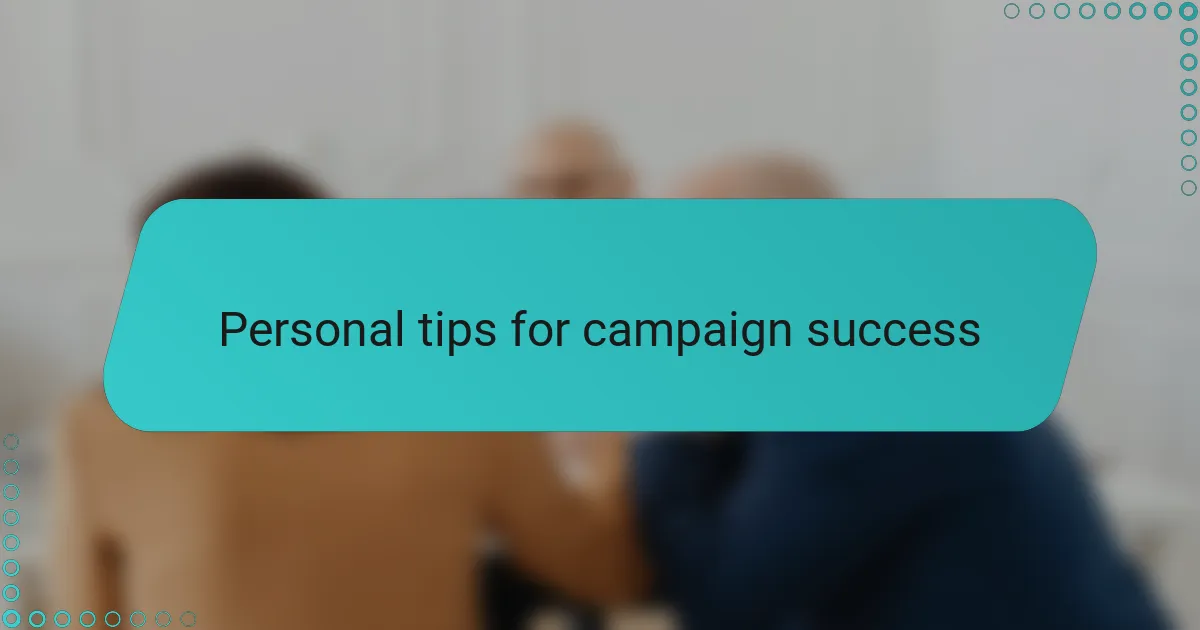
Personal tips for campaign success
One tip I swear by is staying adaptable throughout the campaign. No matter how much you plan, unexpected challenges pop up, and being flexible lets you pivot without losing momentum. Have you ever had to rethink a whole approach because new information came to light? That willingness to adjust has saved several of my campaigns from stalling.
I also emphasize the importance of building genuine relationships with your team and partners. When everyone feels heard and invested, the energy drives the campaign forward in ways that isolated efforts never do. Can you recall a time when collaboration made a project not just easier, but more impactful? That sense of shared purpose fuels creativity and resilience.
Lastly, I always remind myself to celebrate small wins along the way. Advocacy can be a long and tough road, so recognizing progress keeps morale high. Have you noticed how even a tiny victory can reignite your passion and commitment? Those moments sustain me—and my team—until the bigger goals come into view.
